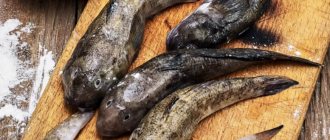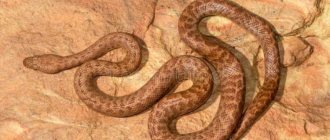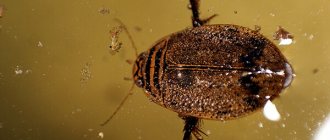Barracuda is a dangerous predator and belongs to the genus of marine ray-finned fish. The habitat of this animal is in the warm waters of the oceans and seas of the tropical and subtropical zone. This terrible creature does not live only in the Arctic Ocean. The adult loves to be on the surface of the water in the open sea. Small representatives of the species prefer quiet and muddy backwaters on the coast or in shallow water. Barracuda settles in places where you can hide or hide, or hide during the hunt. Hidden places can be: coral reefs, small caves in the rocks, algae thickets.
According to the description, the barracuda has a head and body shape resembling a torpedo. The lower jaw, which protrudes forward, gives it a terrifying appearance. On the outside is a row of small, sharp teeth, and on the inside are large fangs. A terrible sight. A large and wide tail helps to move very quickly in the water. On the back of this fish there are two fins separated from each other. The cycloid scales on the carcass can be colored silver, green, gray and blue. There are faint stripes on the sides. The belly of a water monster is always much lighter than the color on its back. Interesting and terrifying facts about this sea animal.
What is a barracuda
The most common type of barracuda fish is Sphyraene barracuda - a large species with a fearsome jaw and a row of teeth protruding forward. There are 27 species of barracuda in the wild, and many are named after the regions where they are most likely to be found in large schools.
This species of fish lives in the tropics and subtropics around the world. They are easily recognized by their long, thin body that tapers towards the tail, with a slightly flat head and an unusual arrangement of lower and upper fins.
Description and features of barracuda fish
The predatory fish, which resemble a more fearsome version of the pike (called "sea pike"), have an elongated head and elongated snout with a protruding, strong jaw and rows of teeth, each resembling fangs. The gill area of the fish has no spines and is covered with small silvery scales.
A dark gray stripe is clearly visible on the body from head to tail - the lateral line. The entire body of a barracuda is covered with small scales. The dorsal fins are located far apart. The first fin has five hard spines, the rear fin has one hard spine and nine soft ones. The rear dorsal fin is very similar to the caudal fin, and the ventral fins are located low under the belly, almost symmetrical to the upper fins. The pectoral fins are thin and sharp, and the caudal fins are deeply serrated.
In color, barracudas are silver, dark gray or almost brown with a white belly. Dark spots in fish run along the lower part of the body. They also lack signs of sexual dimorphism.
The mouth on the barracuda's long snout is large, and the teeth are arranged in two rows. The front teeth are small, fang-like, and the second row has larger teeth for chewing food. Because the teeth are crooked and of different lengths, they resemble the jaw of a piranha.
Different types of barracuda have different lengths from 30 cm to 3 m. The largest known specimen weighed 40 kg.
Swimmer's Gift
Calculations of fish movement speed are theoretical.
Experimental methods only work close to shore. The sailboat set its record of 109 km/h in Florida: it pulled 91 meters of fishing line in 3 seconds. It is believed that movement is more active in the depths of the ocean. Academician A.N. Krylov once saw an oak ship frame pierced by the nose of a swordfish. This made him think about the question of which fish in the ocean swims the fastest. The shipbuilder was the first to suggest the speed of the swordfish. His calculations showed that the individual accelerated to 100 km/h. A piece of the ship is now kept in a museum in England.
The body structure of the three winners is distinguished by a fin stretched along the entire ridge. In shape it resembles a sail, which determines the name of the family. When accelerating, all fins fold, which allows the fish to better feel the water and ensures a minimum coefficient of friction. These sea creatures tend to jump out and travel part of the way through the air.
It is quite difficult to determine the fastest fish in the world and its maximum speed. One thing is clear: underwater inhabitants are in no way inferior to mammals and birds. From our selection it is clear that the victims move slower than their enemies. There are cases where people and animals exceeded their capabilities in extreme situations. Do you think fish can exceed their own speed? We are waiting for your comments!
Did you like the article? Share!
Lifestyle and habitat
The most common habitat for barracuda is the oceans, but some species can be found in bodies of water with less saltiness. The largest species of fish, Sphyraena sphyraena, live in the Mediterranean Sea and the Atlantic. Sphyraena picudilla is most often found on the Atlantic coast of America - over a long distance from North Carolina to Brazil and even Bermuda. Other fish species are distributed throughout the world.
Barracuda is a very independent fish. Almost immediately after hatching, the fry are able to obtain food for themselves. They live in shallow water and at this time they themselves become easy prey for predatory fish. Older fish go to depth, and when they reach 8 cm, the fry move away from the coast. After the fish grows to 30cm and becomes an adult, it moves towards the open ocean. Barracudas gather in schools, which distinguishes them from most other species of predatory fish. Most often, predators live separately, and an adult barracuda is quite capable of dealing with enemies on its own, but fish of this type try to stay together.
The behavior of sea pike does not depend on the time of year, since it almost always lives in the warm waters of the World Ocean. The fish is active at any time of the day, so it either swims or hunts. The character of the barracuda is influenced by the weather: during a storm, the fish becomes more aggressive, voracious and shows its character. During a strong storm, barracuda can be found in shallow water, closer to the shore. Fish love to hide in vegetation, literally burying their heads in it. On a sunny day, barracudas are rarely seen, but in general they do not live in one place and are constantly “traveling.”
Where does he live?
Barracuda is found in tropical and subtropical marine areas. A large number of such fish live in the Mediterranean, Caribbean, Red Seas, and in the equatorial part of the Pacific Ocean. It is also found in the Sea of Japan and the Black Sea. Despite the absence of a massive catch, sea pike is a favorite food of the inhabitants of the Hawaiian Islands and the west coast of South America.
Its habitat is directly related to its hunting method. Most often, the sphyrene can be found near reefs, mangroves, and in muddy streams at the confluence of river and sea water. The peculiar color of the fish (any photo will confirm) allows it to remain unnoticed among algae or reefs. Hiding, the sephirena chooses a “tidbit” from the fish swimming past.
But barracudas can also hunt in the upper layers of water, accompanying sharks. Joint hunting is characteristic of small sephirens, large ones stay apart.
Reproduction and lifespan
Male barracudas become sexually mature at 2-3 years, females at 3-4 years. Fish breed all year round, for which they gather in large schools. Even individuals who like a more solitary lifestyle join the rest of the school of fish to participate in mating games.
Barracudas reproduce throughout the year by external fertilization. In this case, females lay eggs on the surface of the water, and males fertilize them. A young female is capable of producing up to 5 thousand eggs, a large adult – up to 250 thousand. The caviar is, as they say, pellagic - that is, it floats freely in sea water, the fish does not care for it in any way. After the fry hatch, they find refuge in shallow water (sometimes swimming into warmer river beds).
Kinds
The barracuda in the photo evokes associations with mackerel in body shape and color. The reason for the similarity is simple - their relationship. Barracudas are part of the mackerel order. The classification, Latin name of the barracuda genus is Sphyraena. Therefore, fish are often called sphyrena. The most famous types of these fish:
Big barracuda.
The fish inhabits subtropical ocean areas. They hunt at depths of less than 100 m. Their favorite places are mangroves and reefs, including the Great Barrier. The body length of an adult fish reaches 1 m. Usually less: about 60 cm. But records also happen. The largest fish caught was 2.1 m long. Some individuals accumulate a toxin in the body, which makes this species dangerous when eaten.
A blunt-nosed sphyrene.
Found off the coast of Indonesia, Micronesia, and the Philippines at a depth of 3-30 m. Visits the coastal waters of Australia and the northern part of New Zealand. It expanded its range by moving from the Red Sea to the Mediterranean.
European barracuda.
It has mastered the coastal, pelagic waters of the Mediterranean Sea and the Black Sea. It is the largest species of sephirenes in these waters. The northernmost region in which it is found is Bristol Bay in England. In addition, it is found in the Bay of Biscay, up to the Canary Islands, in the coastal waters of Latin and South America. Its length is usually 0.6 meters. The largest specimen caught was 1.6 meters in length and 12 kg in weight.
Barracuda guachancho.
Off the coast of Africa from Senegal to Angola, in the Caribbean, from the American state of Massachusetts to Brazil, you can find guachancho at depths of 10 to 100 meters. In areas where barracuda are found, the fish is a commercial target.
California barracuda.
It is also called the Pacific, silvery sphyrene. Found in the Pacific Ocean: from Mexico to Washington. Amateur fishing for this fish is popular in the Gulf of California.
Northern barracuda.
Its range is the western part of the Atlantic. Water areas in the east of Panama, in the Gulf of Mexico, in South Florida. In the north it reaches the Canadian shores. Refers to the smallest representatives of baracudas. A length of 45-55 cm is considered the maximum for them.
Australian barracuda.
The area corresponds to the name - the east coast of Australia to Tasmania. Found off the northern coast of New Zealand. Pelagic species. Gathers in medium-sized flocks on sandbanks. Object of amateur fishing.
Barracuda picudilla.
Found in the Caribbean, off the coast of Florida, the Bahamas, and the coastal waters of Uruguay. For local residents, barracuda fishing is a traditional trade.
Pelican barracuda.
She has mastered the spaces from the Gulf of California to the Galapagos Islands. It lives in small flocks of no more than two dozen individuals. The habitat depth does not exceed 30 m.
Sharp-finned barracuda.
Small, endangered species. Lives in the Indo-Pacific region: from East Africa to Hawaii. It has mastered the pelagic zones off the coasts of Japan and China. The length of this variety is no more than 0.8 m.
Yellowtail barracuda.
One of the smallest species. Inhabits the Indian Ocean. An adult grows up to 0.4 m. The name reflects the peculiarity of its appearance - a yellow tail. There may also be yellow tints on the sides. Engaged in the settlement of new territories. In 1992, it was first caught off the coast of Israel. In 2002 it reached the island of Rhodes, and in 2005 it was caught off the coast of Libya.
Scientists include 28 currently existing species in the genus of sephirenes. But with the systematization of barracudas, not everything is completely resolved. Some species may become subspecies. Corrections to biological systematization are made by genetic studies.
Barracuda feeding
Barracuda is a dedicated predator. That is why its own meat is so tasty and healthy - like most edible predatory fish. Most often, barracuda has the following diet:
- Other types of fish that are smaller in size than the sea pike itself. Most often it is sardine or tuna.
- Small squids.
- Crustaceans.
- Bloodworm.
- Roe of other fish.
Barracuda loves to eat. Every day an adult requires several kilograms of provisions. This largely explains the restless and active lifestyle of the fish - it is constantly in search of prey. A barracuda can wait for prey alone, hiding in thickets, rocks or between corals (this type of hunting is often compared to the habits of a moray eel), or drive prey in a group. Larger individuals prefer solitary hunting. Young animals hunt in a school: they choose a large school of fish, surround it from all sides, driving it in and causing panic inside the school. In such turmoil, the fish, driven and discouraged by such pressure, as a rule, gets caught in the teeth of a predator.
Adult barracudas can stalk prey for a long time, waiting for the perfect moment to attack. Fish do not disdain hunting their relatives. Therefore, the barracuda constantly needs to ensure that it itself does not become prey to its larger brother. It often happens that while hunting in a school, one fish attacks another. This is largely due to the barracuda's aggressive nature and indiscriminate hunting. If during a hunt in a school one of the fish was wounded, it may well become the prey of its relatives. In terms of bloodthirstiness and degree of aggression, barracudas are often compared to sharks.
Sea pike attack larger fish only in schools. As a rule, a large individual is already wounded by that time and cannot fight back much. Barracudas bite her until the prey weakens.
Danger to humans
Of particular danger to humans are large enough schools in which barracudas feel very confident, so even people in scuba gear do not cause any fear in such aquatic predators. Most often, an attack on a person is recorded in muddy or too dark waters, where any movement of an arm or leg is perceived by the barracuda as an opportunity to hunt.
Important! Experts who study marine life rightly believe that the danger of predatory barracuda to people is greatly exaggerated, since in most cases such fish swim quite peacefully near divers and do not show any aggression.
As practice shows, the presence of shiny objects on a swimmer can cause a predator to attack a person. Thanks to its sharp and numerous teeth, the barracuda causes very heavy damage, tearing not only the skin and muscle tissue, but also the veins and arteries of a person.
Return to content
How to choose
Small young fish should be eaten. Toxins are deposited in the fish's body due to eating plankton. Plankton contains harmful substances (as it purifies water). Therefore, with age, a special poison is produced in the barracuda’s body, which means that not all individuals are suitable for food.
For example, the maximum parameter for edible fish is a length of up to 60 cm and a weight of up to 1.5 kg. Huge two-meter or more individuals are pure poison for humans. The largest amount of poison is deposited in the liver and fins. The older and larger the fish, the more toxins it contains.
Benefits for the body
Fish meat is generally beneficial for the body, and sea pike is no exception. It contains taurine, the most beneficial acid for the body, which is not found in all foods. Taurine is responsible for regulating sugar in the body and producing insulin. The amino acid prevents hypertension and improves blood counts. During the cooking process, barracuda loses only 1/5 of its moisture, so its meat remains very tender and fatty. Dishes made from sea pike are included in the national cuisine of the Japanese and Australians.
Commercial value
Barracuda meat is considered very tasty, so the fish is caught in all regions of the world where it is found. Different parts of the world have their own signature barracuda dishes. For example, in Africa they prefer to smoke fish and use smoked meat in the national fish broth, the Japanese use it for sushi, Europeans prefer baked fillets or steaks.
Since the fish has a very intimidating appearance, large specimens make outstanding trophies, which is why barracuda is also a sport fish. At the moment there are no restrictions on catching it.











